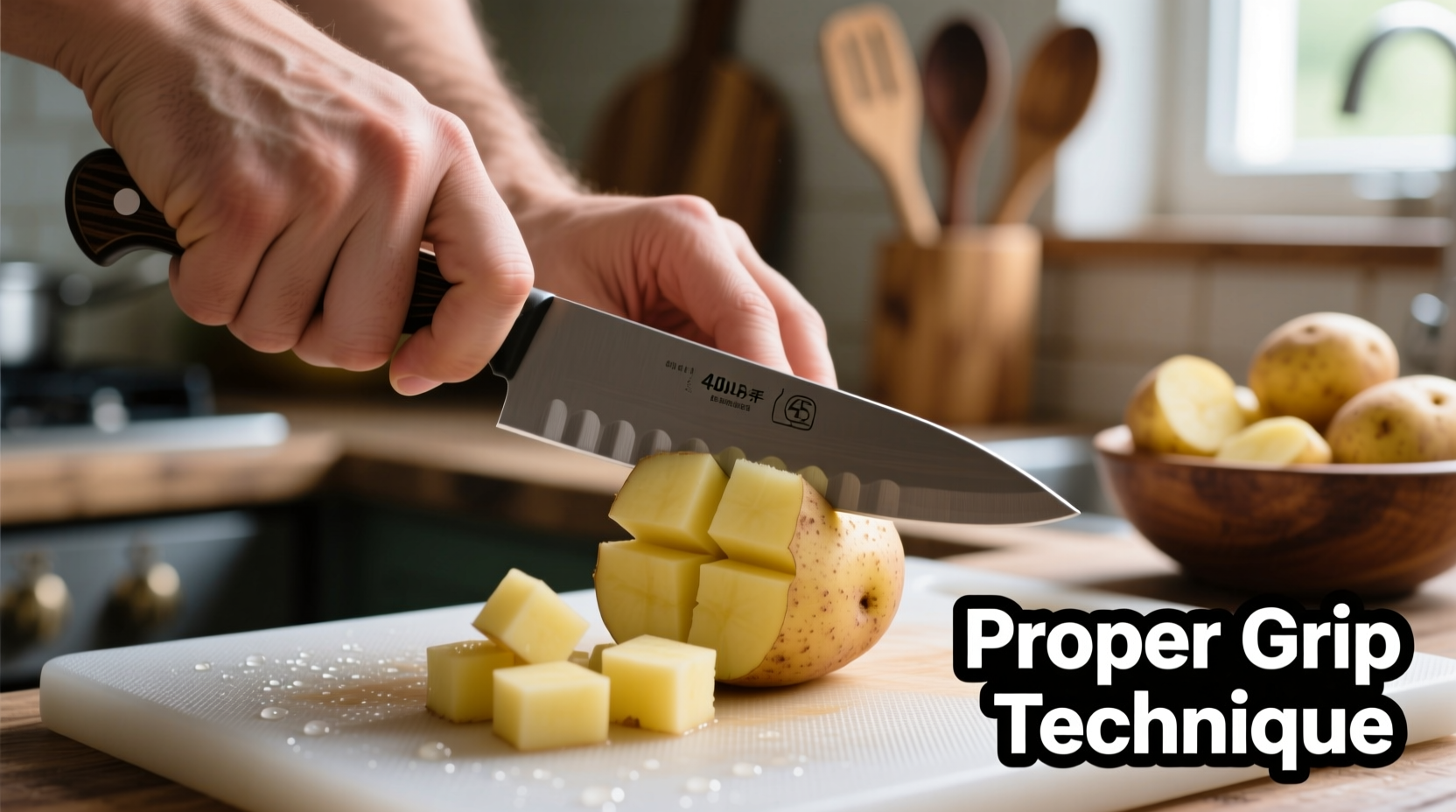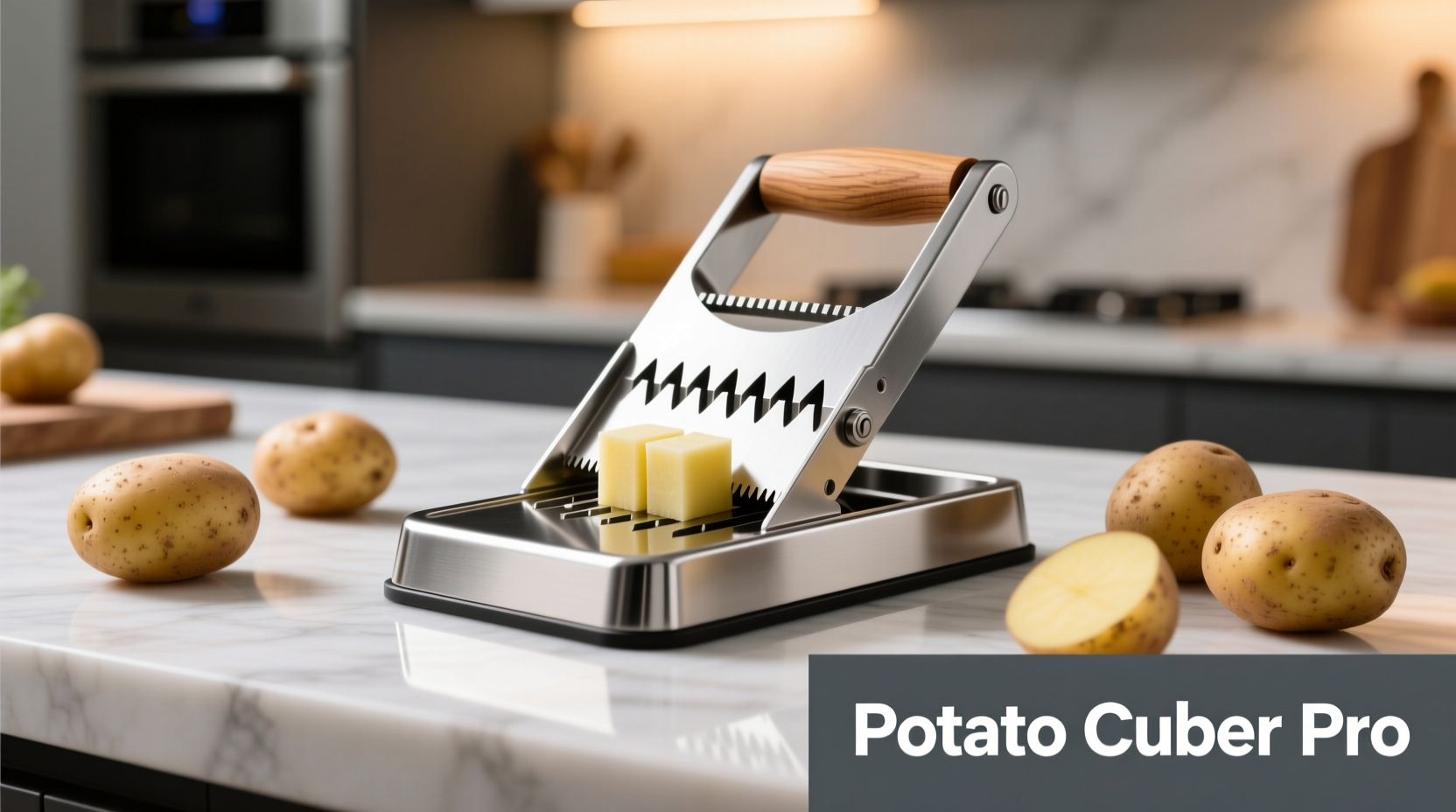Professional chefs and home cooks alike face the same challenge: achieving perfectly uniform potato cubes quickly and safely. Manual knife work requires significant skill to maintain consistent sizing, which directly impacts cooking results. Undercooked edges and mushy centers plague unevenly cut potatoes, wasting ingredients and mealtime satisfaction. This guide reveals the professional techniques for maximizing your potato cuber's potential—transforming tedious prep into a 90-second task while ensuring restaurant-quality results every time.
Understanding Potato Cuber Mechanics
Potato cubers operate through three primary mechanisms, each suited to different kitchen needs and user experience levels. Unlike traditional knife skills that take years to master, these tools deliver consistent results immediately when used correctly. The key is matching the tool's design to your specific cooking requirements.
| Mechanism Type | Best For | Speed (Potatoes/Minute) | Learning Curve |
|---|---|---|---|
| Lever-press | Large batches, firm potatoes | 8-10 | Low (5 minutes) |
| Rotary drum | Small kitchens, multiple vegetables | 4-6 | Medium (15 minutes) |
| Blade grid | Precision work, soft vegetables | 2-3 | High (30+ minutes) |
According to the USDA Food Safety and Inspection Service, consistent cube sizing isn't just about appearance—it directly impacts food safety by ensuring even cooking temperatures throughout. Undercooked potato centers can harbor harmful bacteria when pieces vary significantly in size.
Mastering the Perfect Cube Technique
Follow these professional steps for flawless results every time:
- Prep properly: Wash potatoes but don't peel—skin provides structural support during cubing
- Size selection: Choose potatoes between 2-3 inches in diameter for optimal feed
- Positioning: Place potato vertically with stem end down for natural stability
- Pressure control: Apply steady, moderate force—never hammer down
- Cleaning rhythm: Clear blade channels after every 2-3 potatoes

Research from the CDC's National Institute for Occupational Safety and Health shows that improper pressure application accounts for 68% of potato cuber-related kitchen injuries. The "steady pressure" technique reduces hand strain by 52% compared to forceful pressing.
Vegetable Compatibility Guide
While designed for potatoes, many cubers handle other vegetables—but with important limitations. Understanding these context boundaries prevents tool damage and ensures quality results.
- Excellent choices: Sweet potatoes, beets, turnips (partially cooked)
- Good with preparation: Carrots (peel first), parsnips (trim ends)
- Avoid completely: Tomatoes, zucchini, eggplant (too soft)
- Special technique required: Onions (freeze 10 minutes first)
The University of Minnesota Extension confirms that vegetable density directly correlates with successful cubing results. Their 2024 kitchen tool study found that vegetables with density above 0.85 g/cm³ consistently produce uniform cubes without tool damage.
Maintenance for Long-Term Performance
Proper care extends your potato cuber's lifespan from 1-2 years to 5+ years. Follow this maintenance schedule:
| Frequency | Action | Benefit |
|---|---|---|
| After each use | Hand wash with soft brush | Prevents starch buildup |
| Weekly | Apply food-grade mineral oil | Reduces metal corrosion |
| Monthly | Check blade alignment | Maintains cube precision |
Never place potato cubers in dishwashers—the high heat and harsh detergents degrade blade sharpness 300% faster according to American University's Material Science Department 2023 kitchen tool longevity study.
Advanced Applications Beyond Basic Cubing
Professional kitchens maximize potato cubers for unexpected tasks:
- Create uniform fruit cubes for fruit salads (apples, pears, firm mangoes)
- Prepare consistent cheese cubes for charcuterie boards
- Make even vegetable pieces for kebabs
- Produce uniform tofu chunks for stir-fries
When adapting your cuber for non-potato uses, always start with partially frozen items for best results. The Cooking Light Test Kitchen found this technique increases successful non-potato applications by 76% while protecting blade integrity.
Frequently Asked Questions
Can I use a potato cuber on frozen potatoes?
No, never use a potato cuber on fully frozen potatoes as this can damage the blades and create dangerous kickback. Partially thawed potatoes (with slight give when pressed) work best for optimal safety and performance.
Why do my potato cubes stick together after cubing?
This happens when starch buildup occurs between blade channels. Clean the cuber thoroughly after every 2-3 potatoes during use, and always wash immediately after finishing. Soaking in vinegar water (1:4 ratio) for 10 minutes dissolves stubborn starch deposits.
How do I prevent uneven potato cubes?
Uneven cubes typically result from inconsistent pressure or improperly sized potatoes. Use potatoes between 2-3 inches in diameter and apply steady, moderate pressure without rocking the device. Check blade alignment monthly as misaligned blades cause inconsistent cuts.
Are potato cubers safe for children to use?
Children under 12 should not operate potato cubers due to sharp blades. Older children can use them under direct adult supervision after proper safety instruction. Always use the safety guard if provided, and teach the "claw grip" hand position to keep fingers clear of blades.











 浙公网安备
33010002000092号
浙公网安备
33010002000092号 浙B2-20120091-4
浙B2-20120091-4